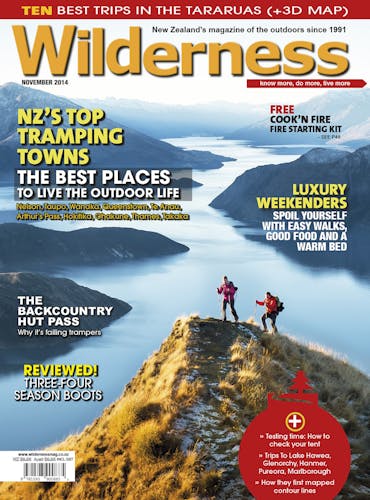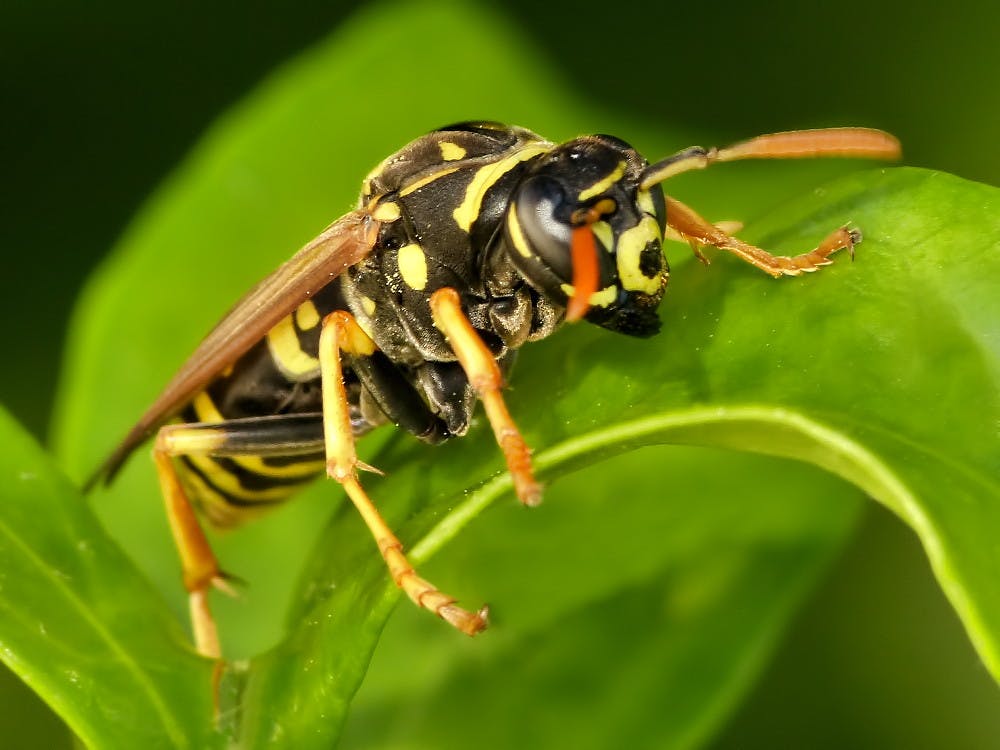Wasp avoidance
The article A Sting in the Tale (October 2014) contained some interesting and useful information about the wasp problem, but it didn’t mention anything about finding wasp nests (apart from treading on them… not recommended!).
Finding a nest can be very useful if it’s near a hut, for instance, whether it be to destroy or pinpoint to others so they can avoid it.
Wasps have a restricted 50m to 100m range from a nest/colony and, with the light at the right angle and an observant eye on their flight path, it is quite easy to see their direction. They always fly in a straight line to their nest (which helps), which is usually in a dry spot in the ground or against a bank.
Destroying the nest won’t be so easy if you are in the bush. A half-teaspoon of the insecticide Carbaryl puffed via a plastic bottle nozzle into the entrance works well. Solvents like petrol work, but are a lot more risky.
In my experience, the first and maybe the next one or two, in a line of trampers, coming across a nest, are usually fine. It’s the rest who are at risk from the stirred up wasps. So always go first!
It pays to be extra observant in wasp territory, eyes on any wasp-flight-collections near the ground, and you are usually fine.
On a totally different subject; great to see the article about Tunnel Creek Hut and the encouragement for outdoor types to help with some of our remote huts and tracks.
-Barry Dunnett
Bold road to somewhere
I think it’s healthy when people advance different perspectives, but only when this is done for the greater good and with a healthy dose of fact-based objectivity. In my view, the opinion piece – Bold Road to Nowhere (October) – certainly fell short on both counts.
The author’s opposition to The Old Ghost Road, amongst other things, is well known. That’s his prerogative. However, the mistruths and conspiracies that were portrayed as fact in his piece (the latest conspiracy being that the project has mining motives) require correction to ensure that Wilderness readers are fully informed. The hundreds of volunteers who have poured over 20,000 hours of blood, sweat, tears and joy into this project, and the amazing group of corporate citizens and funding agencies that have contributed to our grassroots effort deserve that the truth is told.
We’ve given the author opportunities to engage with and shape this project, and in particular its emerging predator control element. Others have taken up that offer and we’re all better off as a result. It’s regretful that the author cannot collaborate in the same productive fashion.
I’m privileged to be part of this project. I’m also privileged to see and connect with the humbling, overwhelmingly positive feedback from users of The Old Ghost Road – people immersing themselves in our amazing outdoors and maintaining their connection and custodianship with what makes NZ special. With this project comes serious responsibilities (particularly to the environment) and considerable technical and logistical challenges. We wish it were as easy “as building…..by spin alone” but it’s taken a fair bit more. Metre by metre – 70,000 of them thus far – The Old Ghost Road is coming to life and is currently over 85% complete.
One of the claims in the Bold Road to Nowhere does have an objective basis: that time will determine the fate of the project. The author’s opinion piece only serves as inspiration to ensure The Old Ghost Road becomes a “Bold Road to Somewhere”, and we trust that users will experience and judge the merits of this project for themselves based on their own observations.
-Phil Rossiter
Adopting backcountry huts
I enjoyed Geoff Spearpoint’s article (Taking Care of Shelter, October 2014) about taking over the maintenance of Tunnel Creek Hut. This is a great hut when returning from a good climb of Mts Hooker and McCullaugh.
Palmerston North Tramping and Mountaineering Club has recently taken over the maintenance of Mid Poh and Ngamoko Huts in the Ruahines. Like Geoff we were also astonished at the size of the agreement document that we had to sign. It could almost be considered a book full of legalese! We assume that DOC head office bureaucracy produced such a document.
We sent it off to the FMC and a legal expert who both responded in amazement at the size of the document just to look after a hut or two.
There appears to be attempts to shorten future documents. So if anyone is thinking about taking over the maintenance of a DOC hut, don’t be put off by the length of the agreement document. In our agreement there was an escape clause anyhow, if things went wrong.
Local DOC staff, as well as other operators, are always very helpful when it comes to giving support regarding hut maintenance. This is what counts when it comes to completing the work that’s needed.
-Terry Crippen
Back to the (woollen) future
When I first started tramping (too many years ago to think about) the clothing available was mainly hard scratchy wool in the shape of black singlets and bush shirts along with Japara rain gear and woollen puttees.
When polypropylene was first introduced I, and many others, thought it was the greatest thing since sliced bread, never mind the smell after a few days in the bush. Then along came fleece in various forms like wind stopper and thinsulate and a myriad of other technical moisture management fabrics.
But a few days ago, as I was running into Waitewaiwai Hut in the Tararuas, I realised that lately I have been wearing wool again but now it is lightweight, soft easy care merino in a great variety of styles and colours and, best of all, it is easy care, just throw it in the washing machine with everything else. So the wheel has turned full circle and I am more than happy to be back wearing a locally grown and manufactured natural resource.
-John Arthur
Three-wire no more
Unfortunately the three-wire bridge mentioned on the Tutaekuri River, Kaweka Forest Park (See More, September) has been replaced with a typical committee-designed and over-engineered bridge that could well support a Mac truck. The next closest would be at Rocks Ahead, also in the Kawekas.
-Paul Brewer







